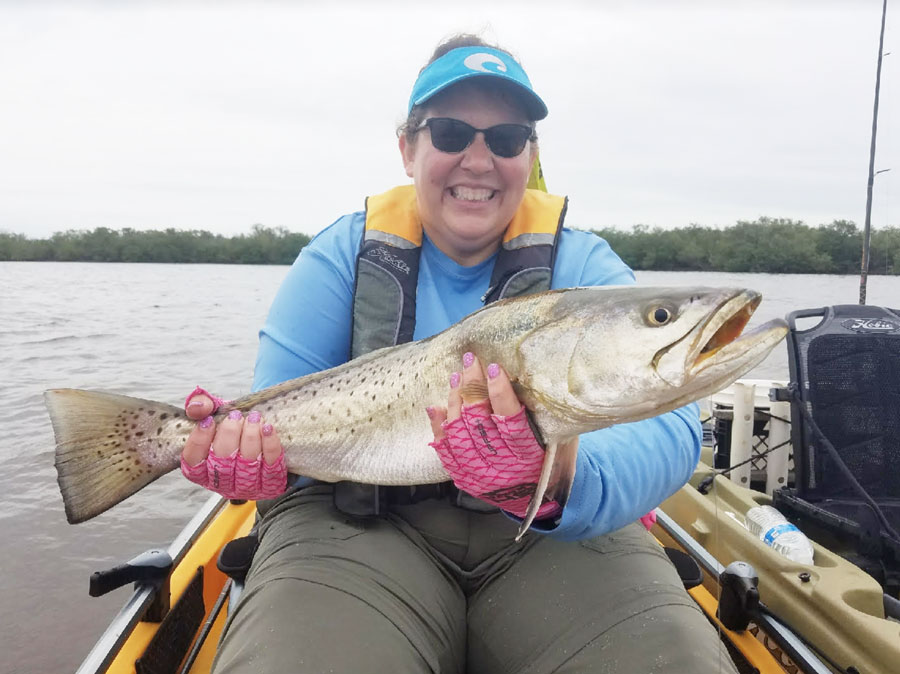
As with every year, spring has sprung and the gator trout are happy.
Spring is a lot of things to the waterways of this area. Bringer of warmth, calmer of winds and catalyst for spawns. Every fish has their own special time, place and way that they “do the deed.” It’s not random or unknown! People have studied how and why certain species enjoy certain procreation protocols. For trout, that protocol is a full or new moon in spring on its desired estuary. This, in turn, means your best opportunity for the largest trout to be most aggressive is in or around those special times.
Many folks know how and where to catch a mess of little trout, but fall short on getting those real BIG FISH in their hands. One of the most common mistakes is that they fail to realize seatrout over the low 20″ range become a completely different animal than their younger cousins. The smaller versions are content in large schools around lights, bridges, drop-offs and spoil islands, but not the biggest of the bunch. The big trout become solitary and prefer to stalk the shallows alone or in small groups. This means an angler looking to max out their personal best on trout should be stalking the same shallows.
When trout spawn they do so in a broadcast method. Where groups of larger 18-24″ males will follow a large female off the flats into deeper holes and they all disperse their eggs/milt into the water. This mix will fertilize the eggs and more trout will start their new life.
With trout, a few rules of biology are in store. One of the most important things to remember this time of year is that all trout over 24″ are female. Yes, you might find a slightly bigger than 24″ male, but they will be rare and as their length increases the number of males dramatically decrease. The reason this matters to anglers is twofold:
1) Conservation of the fishery. Since all true “gator” trout above 25″ in size are female, it’s important to exercise care when targeting these large ladies, as to avoid undue burden on the species’ ability to propagate. With the current state of our waterway in terms of water quality and loss of seagrass coverage (which is imperative to our trout reproduction), it is our duty to be responsible. Catch and release of large trout should be a priority, and the very best practices should be used to unsure they will swim away healthy. Swap out treble hooks on your topwater plugs to inline singles. This will make the most effective big trout lure for low light fishing and make it less harmful. Use wet hands instead of a net to hold or grab your fish and get that hero shot quick.
2) Locating the Big Bertha. If you’re targeting a monster in hopes of obtaining entry into the +30″ club, this is your chance. Big females will find a happy place with the correct conditions for a successful spawn. It will include several loose groups of smaller and extremely aggressive males. When I find an area where I am catching multiple trout in the 18″-22″ range this time of year, I will set up shop because one thing is almost guaranteed: one or more large females will be stationed in that area. Did the big females bring the group of smaller males or did the group of males bring her? Regardless, they will both be there.
As stated above, topwater bite in low light conditions almost never fails to get attention from just about every trout in your vicinity. When the sun climbs high, send your baits a little lower. Soft plastic paddletail lures like the Slayer Inc SSTxl are a perfect fit for this.


Leave A Comment
You must be logged in to post a comment.